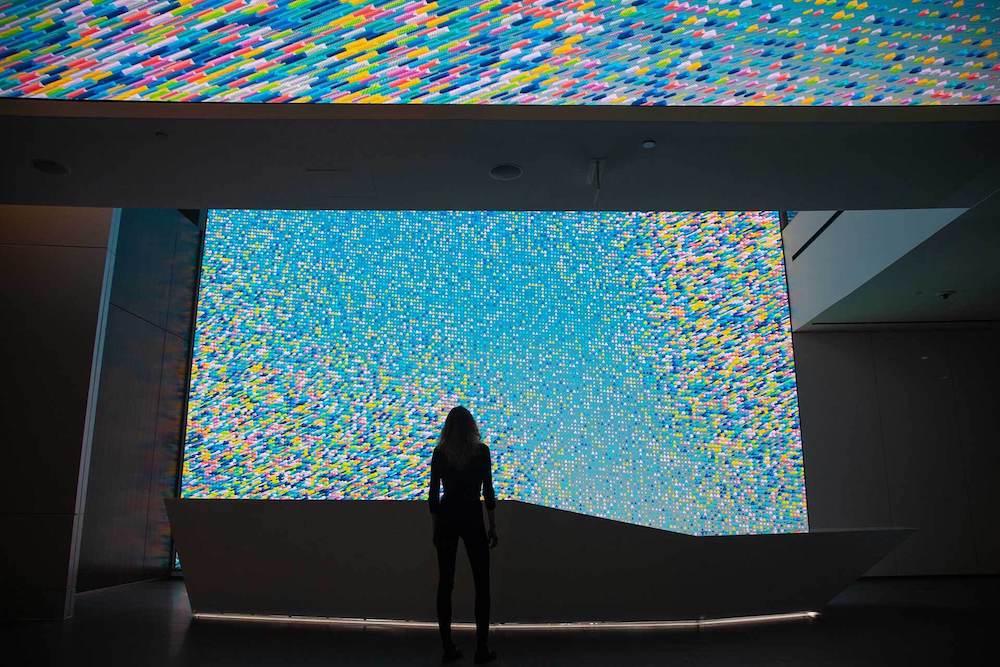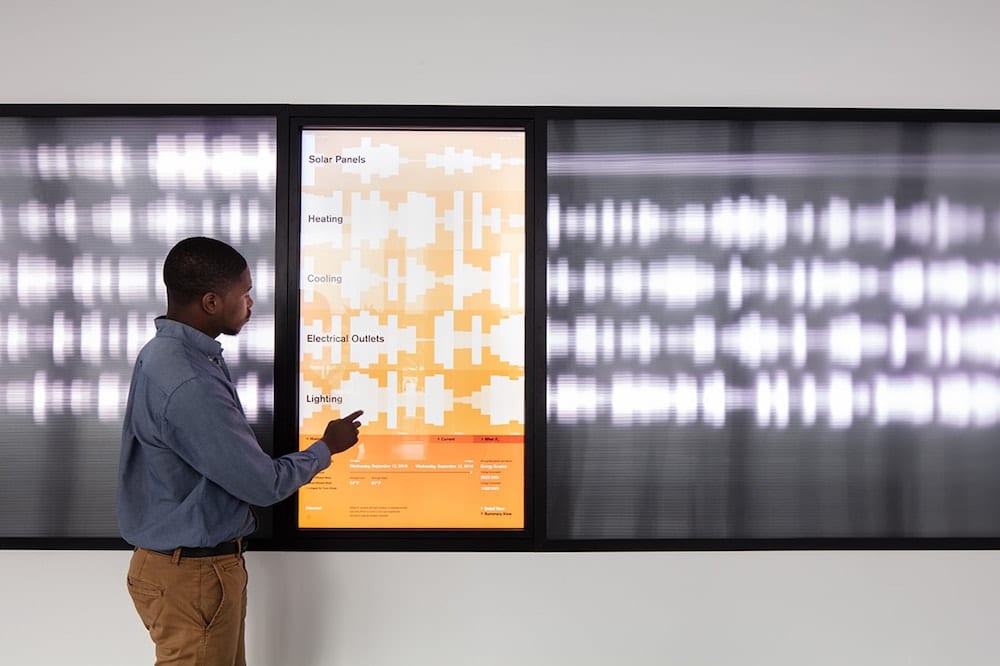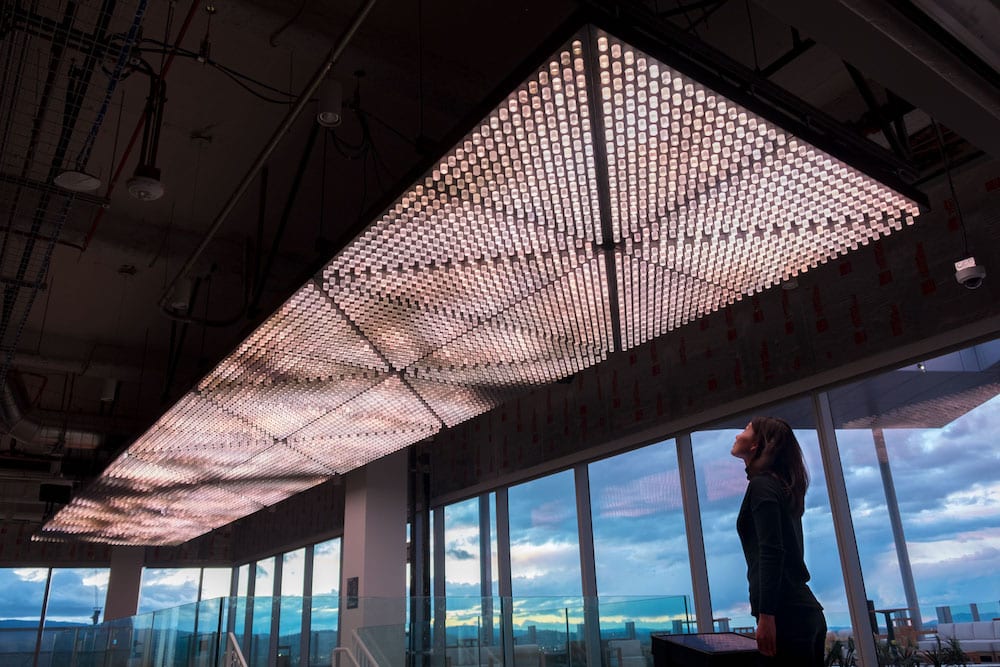
Award-winning creative David Schwarz, Founding Partner of design agency HUSH, shares his thoughts on why the post-Covid office will be a hub of inspiration where data and touchless forms of interactivity will embody company values
The pandemic brought a sudden, massive shift in every aspect of our lives. Specifically, our collective vision for the future of work is challenged at every scale and has affected everyone asymmetrically, with the same complexities that differentiate our respective professions, industries and organisations.
At the same time, it has also presented us with a world of possibilities to completely rethink our work-life routines and revolutionise our workplace experience to suit the ‘new normal’ and the rapidly curving trend.
As experience designers, we are in the business of imagining the future and of conceiving of what is yet to be. But the existential considerations stirred by COVID-19 have presented entirely unique challenges in designing this future – all of which must be grappled with immediately. The world keeps turning.

Many have predicted the death of the traditional workplace entirely. This might be possible for a select group of companies and their employees. In general, however, it seems many of the leading companies of the world are still investing in major lease agreements – proof that big bets are still being placed on the existence (and therefore importance) of workplaces as a catalyst for future success. So, even if the workplace (in its square footage) is not dead, it must transform – radically.
Radical workplace design transformation is not the series of obvious design moves being implemented as we speak: touchless tech, circular traffic flows, or increased space per employee. In fact, those table stakes are a distraction from the true – and potentially radical – experience design opportunity at hand. We need to think bigger, and get uncomfortable with our expectations of the workplace and its purpose in an organisation’s vision to achieve success.
To me, this means retiring our vision of the workplace as a space to perform traditional ‘work’ – those functional activities we now do so very well, flexibly, efficiently and powerfully at home, or in our preferred third spaces. The workplace – perhaps better called the ‘visionplace’ – will become an experiential ecosystem designed around uplifting a company’s vision, recruiting, galvanising, and educating the best talent in the world and supporting architectural-scale employee interactions impossible at home – or anywhere else. This is the “onsite-offsite.”

Whereas previously, teams left the work campus to find new experiences that shake up thinking and precipitate their innovation, the future is a campus designed to do just that – and only that – supported by physical-digital ecosystems and multi-sensory experiences that prioritise culture, collaboration and vision-setting above all else. Who doesn’t want to go to that workplace?
In some respects, this is nothing new. The most advanced organisations in the world already invest in these kinds of experiences to recruit the best, inspire their teams, and incite qualitative and informational interaction between employees. What’s new is the proportion; what were once speciality spaces will become the anchors of future workplace programmes. The campus workplace will fold in new technical approaches, employee feedback, data capture and upvoted employee content which transform the workplace environment into a reflection of the company’s broader cultural mission.
In our work with biotech innovator United Therapeutics, we used technological data to do just this, creating an artistic and informational experience design system to inspire the building’s inhabitants and make them an integral part of their own environment. This kind of workplace experience reaches beyond the commodities of old – of desks and conference rooms and coffee machines – and aligns the actions of employees with the larger company mission.

Will people want to come back to the office? Imagine this: every day workers around the world will wake up and decide one thing: ‘Should I work from home or go to the office today?’ We’re now accustomed to the convenience and functional benefits of working from home. But what are we missing? There is simply no satisfactory virtual replacement for the qualitative aspects of work – culture, collaboration, and the energy of office environments. This is true in companies large and small – it’s our innate human desire to commune, pushing forward even amidst a global pandemic.
So, why would we design the future workplace to match any other desire than this innate, qualitative human need? We need to liberate ourselves from the old, near-sighted visions of the workplace experience. With the requirements for most functional work easily delivered through a broadband connection and a host of existing and new digital tools, organisations can wholly reimagine the physical workplace experience, focusing its offerings to help all employees, partners and guests better understand the company’s ideals and mission through site-specific experiences programmed with rotating teams, meet-ups and group participation.
We won’t be there all the time. We don’t need to be. But we’ll go when the value of the experience is simply something we can’t get anywhere else, nor in any other medium than the built environment. The office can become a special, sacred place where people gather to find inspiration, celebrate each other’s achievements, and be reminded of their place in the company community.
Images courtesy of HUSH


























